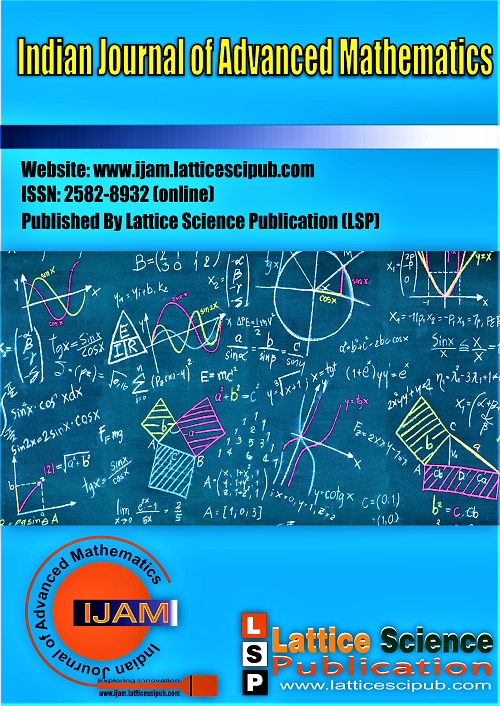A Model for Combining Allegorical Mental Imagery with Intuitive Thinking in Understanding the Limit of a Function
Main Article Content
Abstract
The main purpose of this article is to use a combination of mental imagery and puppet allegory to intuition the concept of limit for learners. Usually to start teaching, teaching the limit of functions, there are several methods, but most instructors use the Epsilon and Delta formula. Obviously, starting with teaching with formulas, it is not easy to explain the concept of limit. Because, learners achieve a deep understanding of the limit, when the concepts become intuitive for them. Intuition of the limit of functions, with proper mental imagery and allegory, can make understanding the limit easy and enjoyable. Obviously, following the optimal understanding of the limit, understanding, Neighborhood. Derivation and integrals, for learners It becomes easier. The use of a combination of mental imagery with puppet allegorical patterns to intuitive or sensory thinking that is the result of three decades of experience and teaching of the author, to be available to learners and educators. In this way, very soon, learners (especially non-mathematics learners), especially in high school classes, or the first years of university, they manage to have a deep understanding of the limit, Because one of the ways to teach mathematics is to use the properties of mental imagery to be objective or sensory through allegory, which has a high effectiveness and feedback in understanding the limit. In this article functions limit education is considered by combining mental and sensory imagery through allegory or simile with six puppet images. The experiences in this research can be used by teachers of teacher training centers, teachers and high schools and universities and designers of educational materials.
Downloads
Article Details

This work is licensed under a Creative Commons Attribution-NonCommercial-NoDerivatives 4.0 International License.
How to Cite
References
(ETESAMI, Z. FIGURATIVE THINKING IS AN EFFECTIVE WAY TO CONNECT THE MATHEMATICAL WORLD WITH THE REAL WORLD. (2019). HTTPS://SOAAD.IR
Scarlek Keith. Teaching skills (teaching mathematics), translated by Manouchehr Mojavar and Ahmad Sadeghi, Astan Quds Razavi Publications(2001).
Polya George). How to solve the problem, translated by Ahmad Aram, Kayhan Publications (2013.
Boris Joyce Marshall. New Teaching Patterns, translated by Mohammad Reza Behrangi, Taban Publications (1996).
Otto C Bassler and Kolb). Teaching high school mathematics, translated by Javad Hamedanizadeh, University Publishing Center (1971.
Shokoohi Gholam Hossein. Method of learning arithmetic and geometry, author's publisher, third edition. soaad_ir@yahoo.com (1985).
Polya George. Mathematical Creativity, translated by Parviz Shahryari, Fatemi Publications (1964).
Newman, William Lawrence. Quantitative and qualitative approaches. (Hassan Danaeifard and Hossein Kazemi, publication (2010).
Eysenck Michael. Descriptive culture of cognitive psychology, translated by Alinaghi Kharrazi and others, Ney Publishing (1379).
Holly Oak,.K.L. The pragmatics of analogical transfer.In G.H.Bover(Ed) The psychology learning and motivation New Yoork. Academic press. Vol.19, pp.59-87 ( 1985) .[CrossRef]
Ebadi, Ahmad and Bakhshipour, Behzad. The role of allegory in the formation of scientific patterns, Mind Quarterly, No. 88, pp. 93-67. Isfahan, Institute of Islamic Culture and Thought (1399).
Yar Mohammadi, M., Farhadi, M. and Yaghoubi, A. Comparison of the effectiveness of critical thinking training, by way of allegory and Car plus cycle, on the cognitive processes of analysis, inference, evaluation, inductive reasoning and deductive reasoning. Journal of New Educational Approaches, No. 23, pp. 104-81. (2015)
John. A. Glover. Royse, Roger. Cognitive psychology for teachers, translated by Alinaghi Kharzi, published (1998).
Haseli , Mastane, M. Review of Mental Imagery, Development of Psychology, serial number 38/ August 2018, pp 133-142 (2018).
Nazari, Sahar, The effect of education using infographics on critical thinking in history lessons, female high school students in Sarpol-e Zahab, M.Sc. thesis(2016).
Issa khani, Atefeh, Shamsi, Sharareh, Mental Illustration in Mathematics Education, 11th National Conference on Psychology, Educational and Social(1400), Sciences, Babul, https://civilica.com/doc/1184092.
Leithold, Louis, Calculus. Analytic geometry. Translators. Behzad and others, academic publication center (1981).
Richard A. Silverman). Calculus with Analytic Geometry, Dover Publications deta (2012.
George B. Thomas, calculus (11th Edition) , Publisher: Addison Wesley, Country: US(2004 ).





